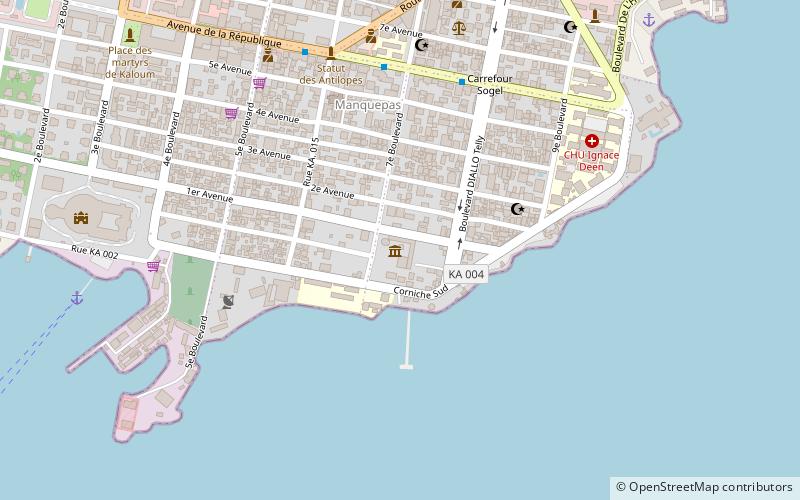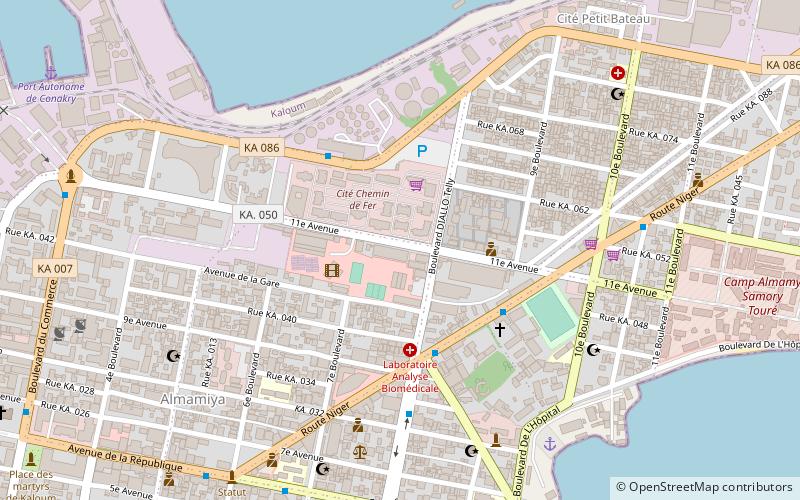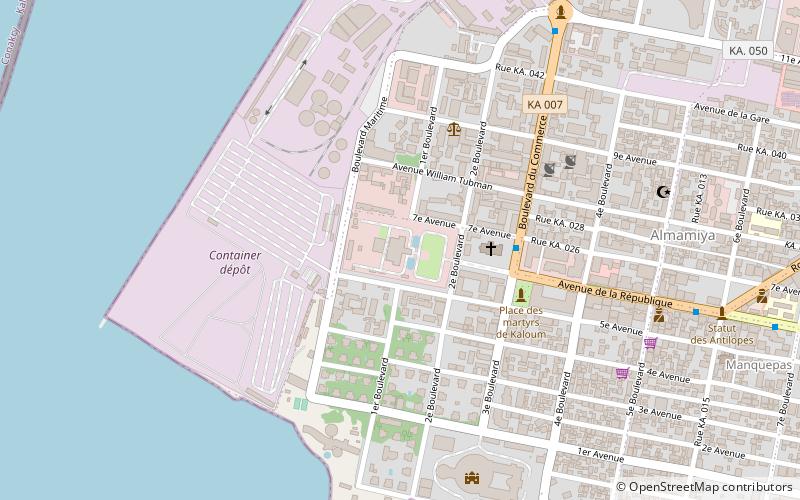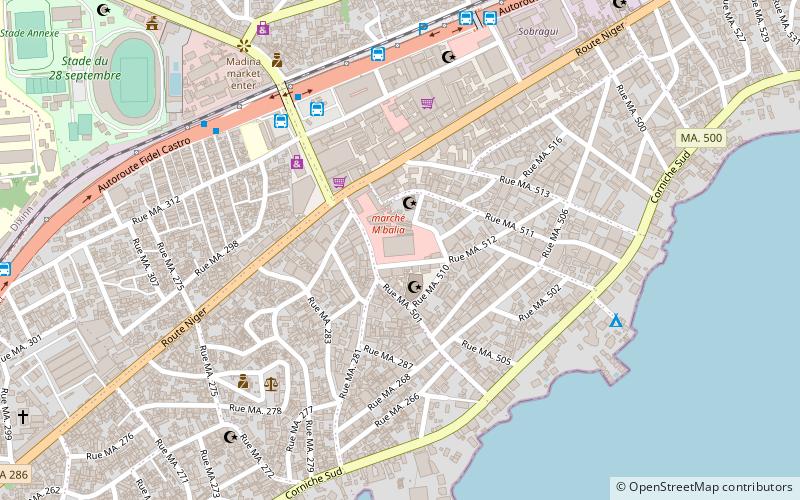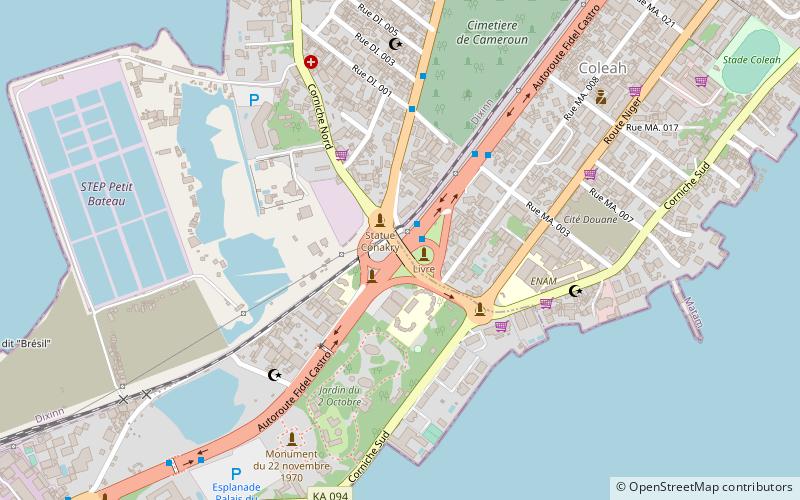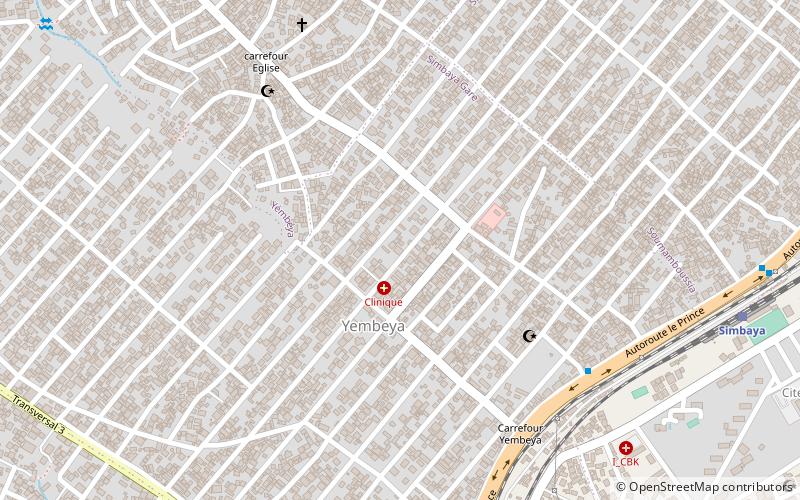Conakry: Sightseeing
Places and attractions in the Sightseeing category
Palais du Peuple
The Palais du Peuple is a venue for important events in Conakry, Guinea. In 2008, the building underwent serious renovations prior to celebrations for Guinea's 50th anniversary of independence.
Sandervalia National Museum
The Sandervalia National Museum is the national museum of Guinea, situated in the capital, Conakry. Most of the rooms are empty, but it contains a limited display of traditional objects from different regions of Guinea, as well as objects and statues from the colonial era.
Marché du Niger
Marché du Niger is a market in Conakry, Guinea, slightly smaller than the other main market in the city, Marché Madina. It sells fruit and vegetables and according to Lonely Planet has a problem with pickpocketing.
Grand Mosque of Conakry
The Conakry Grand Mosque is a mosque in Conakry, Guinea, located east of the Conakry Botanical Garden and beside the Donka Hospital. The mosque was built under Ahmed Sékou Touré with funding from King Fahd of Saudi Arabia. It opened in 1982. It is the fourth largest mosque in Africa and the largest in Sub-Saharan Africa.
National Archives of Guinea
The National Archives of Guinea were established in the 1960s after the country gained its independence. They have been moved three times since then and are currently situated in the capital city of Conakry.
Monument du 22 Novembre 1970
The Monument du 22 Novembre 1970 is a monument in Conakry, Guinea that celebrates the defeat of the attempted coup led by Portuguese troops in 1970, named Operation Green Sea. On 21 November 1970 a group of Portuguese troops assisted by Guinean fighters invaded Conakry from the sea in an attempt to overthrow the Touré regime.
Presidential Palace
The Sekhoutoureah Presidential Palace in Conakry, Guinea is the official residence of the President of Guinea. The Palais Presidentiel Sekhoutoureah is behind the Cathédrale Sainte-Marie.
St. Mary's Cathedral
The Cathédrale Sainte-Marie is an important place of Christian worship in Conakry, Guinea. The yellow and red building is of considerable architectural interest. Monseigneur Raymond René Lérouge laid the foundation stone of the Cathedral in 1928.
Marché Madina
Marché Medina is a market in Conakry, Guinea and one of the largest markets in West Africa. The market was the scene of the Guinean Market Women's Revolt in 1977 that marketed a turning point in the country's economic history and was celebrated as a national holiday following the end of President Ahmed Sékou Touré regime.
8 November Bridge
The 8 November Bridge is a bridge in Conakry, Guinea. It has strategic significance, given that the bridge cuts the Central Business District off from the rest of the city. During coups the bridge has played an important role. The bridge was built in the 1960s and demolished on 10 March 2012.
Conakry Botanical Garden
Conakry Botanical Garden is a botanical garden in Conakry, Guinea. It is located in the Camayenne part of the city, with the Ambroise Paré Hospital to the south and Conakry Grand Mosque to the north. It is noted for its kapok trees.
Camp Boiro
Camp Boiro or Camp Mamadou Boiro is a defunct Guinean concentration camp within Conakry city. During the regime of President Ahmed Sékou Touré, thousands of political opponents were imprisoned at the camp.
Gamal Abdel Nasser University of Conakry
Gamal Abdel Nasser University of Conakry, is the largest university in Guinea and located in Dixinn Commune, Conakry, the Guinean capital. The name is generally shortened to the University of Conakry.
Koure
Kouré is a small town on the outskirts of Conakry, and within the administrative remit of the capital city of Guinea, the Capital Region.
Map


